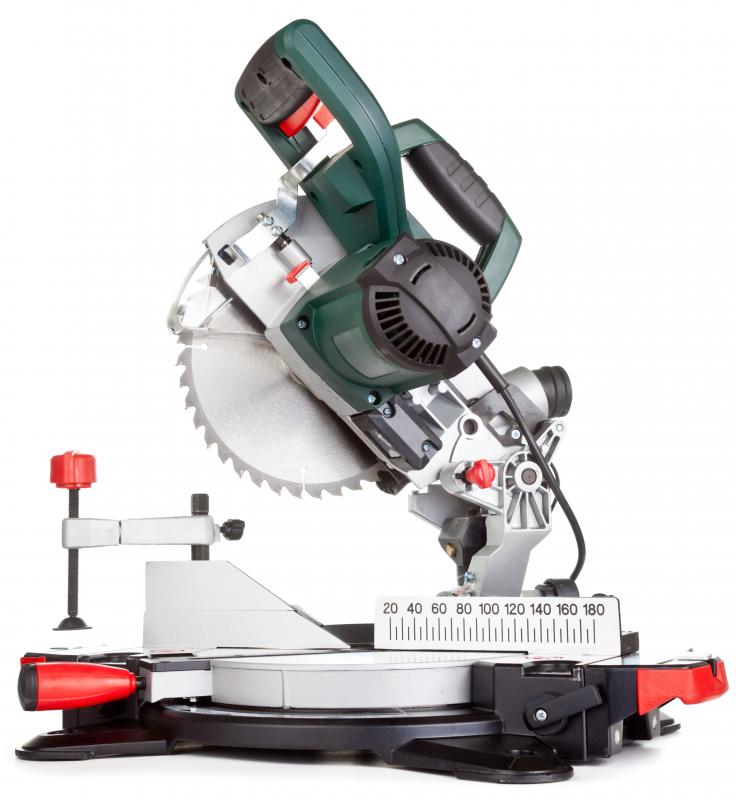At WiseGEEK, we're committed to delivering accurate, trustworthy information. Our expert-authored content is rigorously fact-checked and sourced from credible authorities. Discover how we uphold the highest standards in providing you with reliable knowledge.
What Are the Best Tips for Home Woodworking?
Setting up a woodworking shop at home can be a fun process, but it must be done correctly to ensure home woodworking can be done safely and effectively. A garage, basement, or attic space can make a great workshop, but the woodworker must take into account available light, ventilation possibilities, and access points for safety and convenience. Unlike woodworking done in a professional wood shop, home woodworking is usually done in a much smaller space, which means machines must be chosen carefully not only for functionality, but also for space savings.
The home woodworking shop should only contain tools that will be necessary to complete the projects the woodworker is likely to do on a regular basis. A crowded shop will not be exceptionally functional, and it will be necessary to ensure each machine has plenty of space for proper operation and safety. Combination machines are great for home woodworking applications; these compact machines combine the functions of several larger machines while requiring far less space. The downside to such machines is the time it takes to convert the machine from one function to another. Most home woodworking applications will not be significantly affected by this time requirement, but if the home woodworker is using his shop for commercial purposes, a combination machine may adversely affect the timeliness of a project's completion.

Safety should be the primary concern of all home woodworking projects. The woodworker should take all necessary safety precautions, including wearing safety goggles, ear protection, and in some cases, gloves and aprons. Fire extinguishers should be available and placed in an obvious place, as should first aid kits. The shop should be well lit to prevent accidents, and ventilation will be exceptionally important. A build-up of sawdust in the air can be hazardous to the woodworker's health, so dust collection systems and/or air exchangers should be used to prevent excess dust build up.

The type of wood used during the woodworking process should also be a primary concern of the woodworker, and the storage of that wood may require some alteration of the wood shop. The wood should generally be stored in a cool, dry location to prevent warping or other types of damage, and it should be readily available to accommodate woodworking projects. Storage will also be a vital concern for tools and other materials commonly used in the woodworking process. A workbench with drawers or shelves will be a good first step, but more storage will usually be necessary.
AS FEATURED ON:
AS FEATURED ON:















Discussion Comments
I would suggest having a go at a local art school or perhaps a high school that runs community classes before shelling out money for your own wood working equipment. It's a good way to get a feel for the craft, as well as learning in a hands on kind of way.
I would also keep an eye on auctions, not just the ones that you get online like eBay, but also the real life ones that get advertised in the newspapers. They often have old equipment and you can get some real woodworkers' bargains from there. Good luck!
@browncoat - It really is like having a relationship in my experience. You go through a sort of honeymoon period where everything seems wonderful and new and exciting and, wow, you've managed to make a whole table leg or whatever. And then, it gets boring. The thing is, almost every kind of craft is going to have some repetitive aspects to it. And this is particularly so once you start getting into the more professional aspects of the craft. So, just like with a relationship, you have got to make sure you have enough love for what you are doing to continue on through the boring bits, and the injuries and so forth.
For me, painting is the real love of my life and that can be very expensive once you get into the craft of it. But I'm sure with all the equipment, carpentry would be even worse.
Woodworking really is an art, and I would suggest building your collection of tools slowly. Learn to use each one properly before moving on to the next. I know all too well the feeling of being excited about a new hobby, and splurging on a bunch of new tools and materials, only to discover that after six months or so I've lost interest.
On the other hand, I've got hobbies where I didn't lose interest as well, and in some cases I've even managed to make a bit of money off of them.
Wood working is going to take quite an initial investment if you want to do the good stuff though, so it's worth making sure that you are as committed as you think you are.
Post your comments